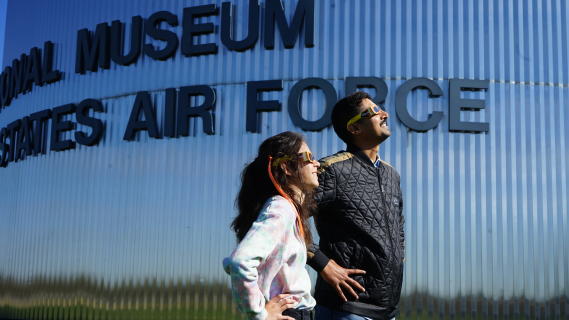On April 8, 2024, will be one of the world's most special, rare and spectacular events: a total solar eclipse. This occurs when the moon's orbit places it squarely between it and the sun and blocks the latter body from some of the Earth's surface. An important feature and what differentiates this from an annular eclipse is that the moon is far enough away from the Earth to block the sun completely.
That path of totality will pass right over Dayton, Ohio, and the sun will be blocked here for two minutes and 43 seconds, from 3:09:29 p.m. EDT to 3:12:12. In fact, those in Dayton will get to experience totality while people who are instead in Cincinnati and Columbus will not as those cities fall just outside its path. Incredibly, the last time that a total eclipse's path crossed any part of Ohio was on June 16, 1806.
Preparing for a Total Solar Eclipse
There are several things that you will want to take into account when preparing for a total eclipse experience.
If you live in Dayton, fortunately, you will not need to travel to the path of totality, which many around the country will need to do to enjoy this. However, if you are in the latter group, transportation and, depending on how far away you are, accommodations will be important considerations as will ensuring that you have enough food and beverages to last for several hours.
A place in Dayton to consider taking this event in, one that has a sky-based theme, is the National Museum of the United States Air Force. Their FREE, once small engine collection now includes more than 350 aerospace vehicles and missiles, thousands of artifacts, and spans 20 indoor acres with additional outdoor Air and Memorial Parks that continue to grow every year. You can set up a viewing spot on its grounds on this special day.
That said, amongst the considerations that you should have in mind when planning for this experience is flexibility, particularly as it relates to weather. Of course, if it is cloudy, you will still experience darkness and many of the goosebump-causing elements of an eclipse but ensure that you are in a cloudless area within the path of totality if at all possible.
Safely Viewing a Total Solar Eclipse
The most important thing to do while preparing for a total eclipse is being prepared to safely view it.
Now, you can look at the sun, well, where it used to be, during the two minutes and 43 seconds that it will be blocked by the moon. However, so much of the focus is also the buildup to it as the moon gradually covers more and more of the sun until it does so completely. Meanwhile, many stay in their viewing spots to watch the reverse happen after totality is over. During these times, you need to protect your eyes, being especially careful in the seconds before totality starts and after it ends.
Many use solar glasses, which can not only provide you with an affordable option but also one that you can keep to remember your eclipse-related experiences. These may be purchased in the National Museum of the U.S. Air Force as well as in numerous other places, particularly as eclipse day nears. Absolutely do use some type of protection outside of those two minutes and 43 seconds as looking directly at the sun may result in permanent eye damage.
Features of a Total Solar Eclipse
So many things happen during an eclipse that you may want to be as mentally prepared for them as possible. One is that the temperature will drop significantly once totality starts. This averages 10 degrees although it can be more. For example, during a total eclipse that occurred on Dec. 9, 1834, the temperature dropped 28 degrees, from 78 to 50.
A particularly surreal feature of a total eclipse is what is essentially a 360-degree sunset. You know how the sky tends to look when sunset occurs in the area around where the sun is dropping below the horizon? During a total eclipse, that is how the entire horizon looks, in all directions.
Keep your ears open too as you may hear birds and other types of animals react differently, whether they are now assuming that it is sunset and naturally doing what they would do at that time or panicking at the sun disappearing at an expected time like humans used to do before they understood how eclipses work.

